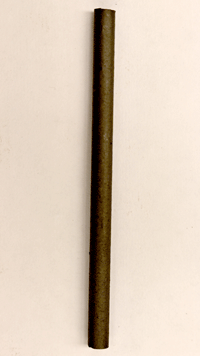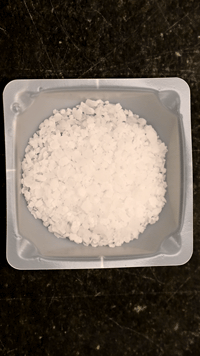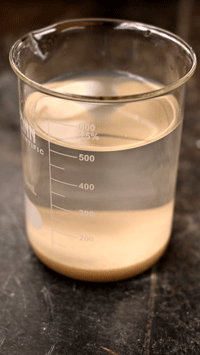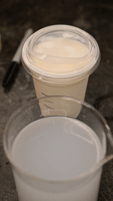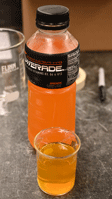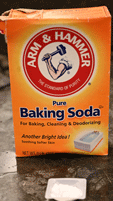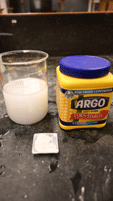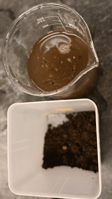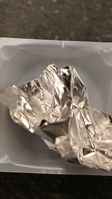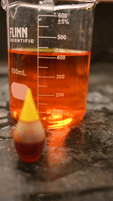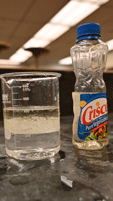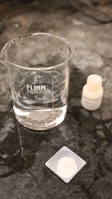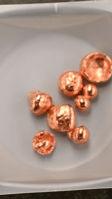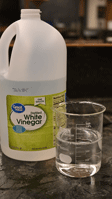Classifying Matter: A Virtual Lab
Teachers: Link to the PD session overviewing this activity
Teachers: Request an Answer KEY
Learning Objectives:
- Students will learn how to categorize matter as either pure substances or mixtures.
- Students will apply tests, based on physical properties of matter samples, to determine whether a mixture is homogeneous or heterogeneous.
- Students will apply tests, based on physical properties of matter samples, to determine whether a heterogeneous mixture is a suspension or a colloid.
Overview:
Link to Google Doc Guided Notes worksheet

Part of science is learning how to ask questions and make observations about our world. Everything around us is made from matter. Matter is anything that has mass and takes up space. Learning how to sort matter into categories that share similar characteristics can help us make better observations so that we can more accurately answer questions that we have.
If I want to take a trip down to the river and pan for gold, how could I determine whether the sample I’m collecting is real gold or Fool’s gold?
I could begin answering this question by observing some physical properties of the sample I collect. A physical property is an observation or measurement that can be taken without changing the identity of a substance.
|
Gold |
Pyrite |
| Au | FeS2 |
| More Dense | Less dense |
| Hardness 2.5 | Hardness 6-6.5 |
| responds differently to heat | |
| $$$$$$$$ | $ |
This list of physical properties would give me a starting point for tests I could run to begin gathering data to help me answer my question - Is my sample real gold or Fool’s gold?
Notice the formulas listed for real gold and Fool’s gold in the table. Real gold is represented by the letters ‘Au’. This combination of letters can be found on the periodic table. The periodic table lists all of the known elements. Since real gold can be found on the periodic table, that makes it an element. Elements are a type of matter known as a pure substance. Elements cannot be broken down into simpler substances. They are made from only one type of atom.
Fool’s gold, or Pyrite, is represented by the letters ‘FeS2’. Both ‘Fe’ and ‘S’ can be found on the periodic table. Compounds are made from two or more elements that are chemically bonded together. Compounds are a second type of pure substance. Compounds always have the same ratio of elements. For example, Pyrite will always exist as one Fe atom for every two S atoms.
Pure substances, which are one type of matter, can either be elements or compounds. Like real gold and Fool’s gold. But what if my sample has several different types of elements and compounds all mixed together? Matter can also be classified as a mixture. Mixtures can either be homogeneous or heterogeneous.
A homogeneous mixture, also known as a solution, contains particles that are very small. Small particles mean that the sample’s composition will look completely uniform or the same. A beam of light, like a laser, can pass through a solution because the particles are not large enough to scatter the light. By contrast, the particle size of a heterogeneous mixture is large enough to distinguish the different parts of the sample. A beam of light that passes through a heterogeneous mixture can illuminate a sample because the particles that make up the mixture are large enough to scatter the light. This is known as the Tyndall effect and can make the heterogeneous mixture appear to glow. If the particles that make up a mixture are very large, they can also block a beam of light from passing through the mixture. Two types of heterogeneous mixtures are suspensions and colloids. Suspensions are made of the largest particles and can be easily separated by physical means such as filtering. A colloid’s particle size is smaller than a suspension but larger than a solution. The particles in a colloid are spread throughout the mixture and are small enough to pass through a coffee filter. Where the particles in a suspension will eventually settle, the particles in a colloid will not settle.
In this virtual lab, you will be classifying different types of matter as either pure substances or mixtures. If the matter sample is classified as a pure substance, you will determine whether the sample is an element or a compound. If the matter sample is classified as a mixture, you will determine whether it’s a solution, colloid, or suspension.
PROCEDURE:
*For in-person lab: Students should wear chemical splash goggles, and follow all other normal laboratory guidelines.
Describe the appearance of each sample of matter. (Pictures of each sample of matter are linked on both the Pre-Lab and Lab Observation tables.)
Using the matter sample ID, (column 1 in both Pre-Lab and Lab Observation tables), determine which samples have parts that appear as elements on the periodic table. These samples can be classified as pure substances.
For the remaining samples, observe the linked videos of the Tyndall effect test. If the laser light illuminates the sample in the beaker (the beaker will appear to glow), the sample can be classified as a heterogeneous mixture. If the laser light does not illuminate the sample, it can be classified as a homogeneous solution.
For the samples identified as heterogeneous mixtures, observe the linked videos of the filter test. If a residue is left on the filter paper after filtering the sample, the heterogeneous mixture can be classified as a suspension. If there is NO residue left on the filter paper, the sample can be classified as a colloid.
Pre-Lab:
Link to Google Doc Pre-Lab worksheet:
Materials used for Pre-Lab
| Carbon rod | Kosher salt | Water |
| Sand | Milk | Sport drink |
| Stir plate / Hot plate | Beakers | Funnel |
| Coffee filters |
Laser or Flashlight |
Interactive Periodic Table (The Royal Society of Chemistry)
Pre-Lab
Classifying Matter Lab
Link to Google Doc Lab Observation Sheet
- MATERIALS (for Classifying Matter Lab)
| Baking soda (Sodium bicarbonate) | Water | Corn starch |
| Sugar | White vinegar | Soil |
| Aluminum foil | Food coloring | Vegetable or canola oil |
| Unflavored gelatin packets | Copper shot | Stir plate / Hot plate |
| Beakers | Funnel | Coffee filters |
| Laser or Flashlight |
Periodic Table |
Data Analysis:
Link to Google Doc Data Analysis
